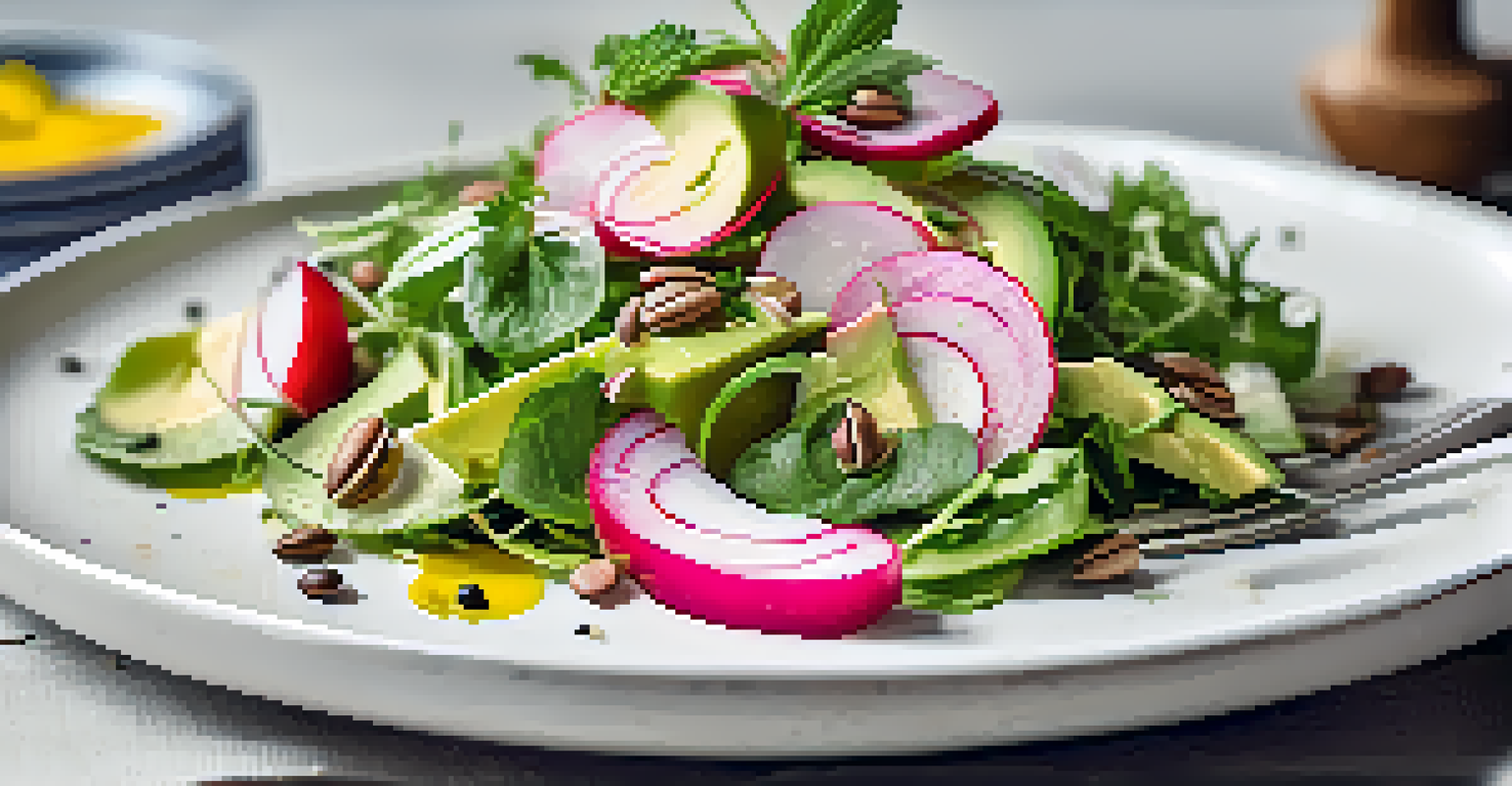All Raw Foods are Healthy: The Truth Behind Raw Diet Myths

Understanding the Basics of Raw Food Diets
A raw food diet primarily consists of unprocessed, uncooked foods. This means fruits, vegetables, nuts, seeds, and sprouted grains are staples, promoting a natural approach to eating. Some enthusiasts even include raw dairy and fish, although these can be contentious.
Let food be thy medicine and medicine be thy food.
The idea behind this diet is that cooking can destroy vital nutrients and enzymes that are beneficial for our health. By consuming foods in their natural state, proponents believe they can enhance digestion, boost energy levels, and improve overall well-being.
However, it’s essential to recognize that not all raw foods are created equal. While fresh produce is generally nutritious, some raw foods can be hard to digest or even harmful if not prepared properly.
Debunking the Myth: Raw Foods Are Always Healthier
It's a common belief that raw foods are inherently healthier than cooked ones, but this isn't always true. Cooking can actually enhance the bioavailability of certain nutrients, such as lycopene in tomatoes and beta-carotene in carrots. Sometimes, the process of cooking makes these nutrients easier for our bodies to absorb.

Moreover, certain foods like beans and potatoes contain harmful toxins when raw. Cooking eliminates these toxins, making the food safe to eat. This highlights the necessity of understanding which foods should be consumed raw and which should not.
Raw Foods Offer Key Nutritional Benefits
Raw foods are rich in vitamins, minerals, and antioxidants, making them beneficial for weight management and overall health.
Thus, the idea that all raw foods are healthier can be misleading. A balanced diet includes both raw and cooked foods, allowing for a range of nutrients while ensuring safety.
Nutritional Benefits of Raw Foods
Raw foods can offer a variety of health benefits, particularly due to their rich vitamin, mineral, and antioxidant content. For example, leafy greens and fresh fruits are low in calories but high in essential nutrients, making them great choices for weight management and overall health.
The food you eat can either be the safest and most powerful form of medicine or the slowest form of poison.
Additionally, raw foods are often high in fiber, which aids digestion and helps maintain a healthy gut. This can lead to improved energy levels and a reduced risk of chronic diseases, such as heart disease and diabetes.
Incorporating more raw foods into your diet can certainly enhance your nutritional intake. However, it's crucial to find a balance that works for your body and lifestyle.
The Importance of Food Variety in Your Diet
One of the fundamental principles of healthy eating is variety. Relying solely on raw foods means you might miss out on essential nutrients found in cooked foods. Each food preparation method has its own set of benefits, so a diverse diet is key.
For instance, cooking can increase the nutrient absorption of some foods while also making them easier to digest. If you only focus on raw foods, you might overlook the benefits of cooked vegetables like steamed broccoli or roasted sweet potatoes.
Cooking Enhances Nutrient Absorption
Certain nutrients, like lycopene and beta-carotene, become easier for our bodies to absorb when foods are cooked.
A balanced diet that includes both raw and cooked foods ensures you're getting a well-rounded mix of nutrients, promoting better health overall.
Potential Risks of a Raw Food Diet
While there are benefits to a raw food diet, it's not without its risks. One significant concern is the potential for nutrient deficiencies. For instance, vitamins like B12, found primarily in animal products, can be scarce in a strictly raw vegan diet.
Additionally, some individuals may find it challenging to get enough calories and protein from raw foods alone. This can lead to fatigue, muscle loss, or other health issues over time. It's essential to consult a healthcare professional if you're considering a drastic dietary change.
Understanding these risks can help you make informed choices about your diet. A well-planned approach that includes both raw and cooked foods can mitigate potential downsides.
How to Incorporate Raw Foods Wisely
If you're interested in adding raw foods to your diet, start slowly. Consider introducing one or two raw meals a week, gradually increasing as you find what works for you. Smoothies, salads, and snackable veggies with dips are delicious ways to start.
Pair raw foods with cooked options to maximize nutrient intake and enhance flavor. For instance, a salad topped with grilled chicken or roasted vegetables can provide a satisfying balance of textures and nutrients.
Balance Raw and Cooked Foods
A varied diet that includes both raw and cooked foods ensures a well-rounded nutrient intake and promotes better health.
Listening to your body is key. Pay attention to how you feel after incorporating raw foods into your meals, and adjust based on your individual needs and preferences.
The Bottom Line: Balance is Key
In conclusion, while raw foods can be a healthy addition to your diet, they are not a cure-all. It’s essential to approach the raw food diet with a balanced mindset, recognizing the benefits of cooking as well.
Remember that every individual’s nutritional needs are different. What works for one person may not necessarily work for another, so finding a personalized balance is crucial.

Ultimately, a varied diet that includes both raw and cooked foods is the best approach for maintaining health and well-being. Embrace the diversity of food preparation methods to nourish your body fully.